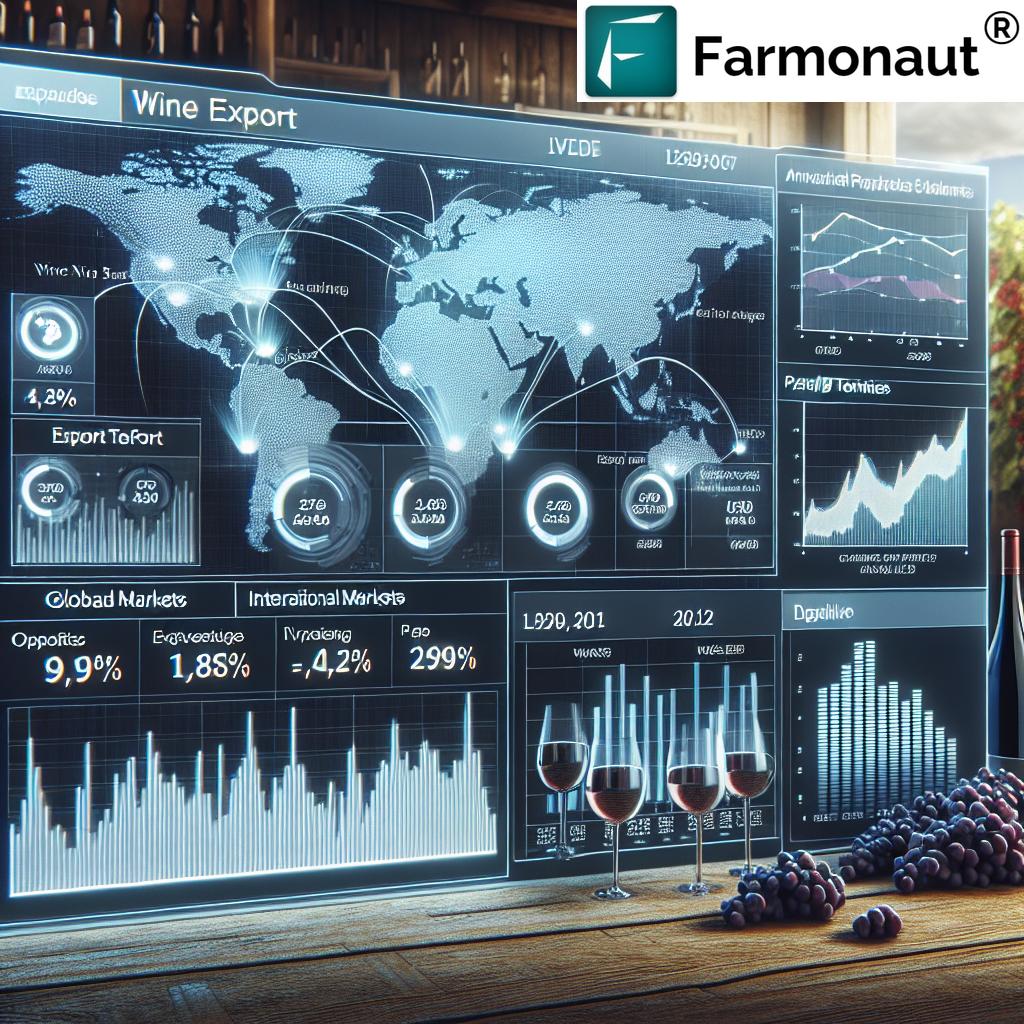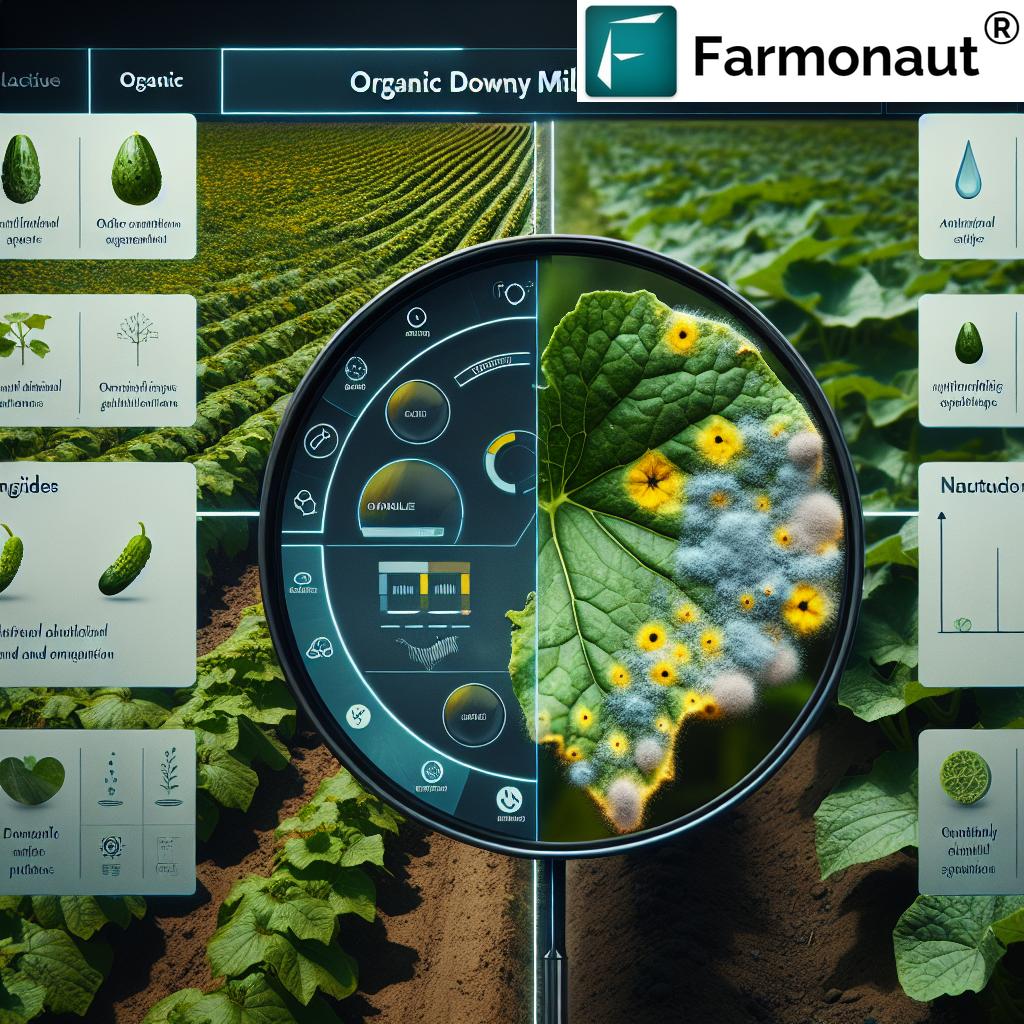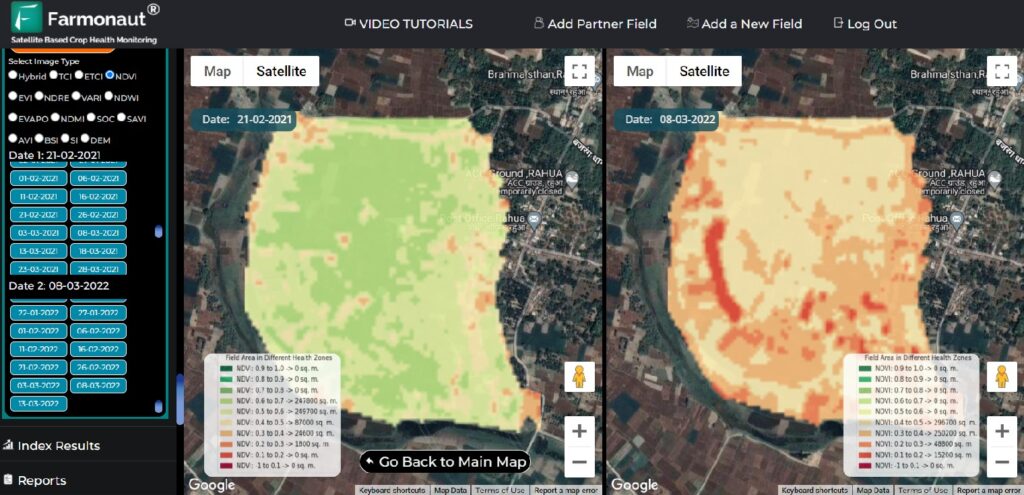Unlocking Global Wine Markets: A Comprehensive Guide to Assessing Your Export Capacity and Capabilities

In the ever-evolving world of wine, expanding into global markets has become a crucial strategy for wineries looking to grow their business and reach new consumers. As we delve into the intricacies of wine export strategies and international wine market dynamics, we’ll guide you through the essential steps to assess your export capacity and capabilities. Whether you’re a boutique winery in Australia or a large-scale producer in Europe, this comprehensive guide will equip you with the knowledge and tools needed to navigate the complexities of the global wine industry.
“Over 70% of successful wine exporters use SMART criteria to develop robust export plans.”
Understanding the Global Wine Industry Landscape
Before embarking on your export journey, it’s crucial to grasp the current state of the global wine industry. The sector has seen significant changes in recent years, with emerging markets, shifting consumer preferences, and increasing focus on sustainability shaping the landscape.
- Emerging Markets: Countries like China and Canada have shown growing appetites for imported wines, presenting new opportunities for exporters.
- Sustainability Focus: There’s an increasing demand for sustainable and organic wines, with consumers showing preference for environmentally conscious producers.
- Digital Transformation: E-commerce and digital marketing have become essential tools for reaching international consumers and building brand presence.
Understanding these trends is crucial for developing effective wine export strategies and identifying potential markets for your products.
Assessing Your Export Readiness
Before diving into international markets, it’s essential to evaluate your winery’s export readiness. This assessment will help you identify strengths and areas for improvement in your export capabilities.
Management Commitment and Resources
Exporting requires dedication from your entire team. Assess the following:
- Is your management team fully committed to the export venture?
- Do you have the financial resources to support international expansion?
- Are you prepared to allocate time and personnel to manage export operations?
Production Capacity and Quality Control
Ensure your winery can meet international demand without compromising quality:
- Can your current production capacity meet additional export demands?
- Do you have robust quality control measures in place to meet international standards?
- Are your vineyard management practices sustainable and scalable?
At this point, it’s worth noting that technological solutions can play a significant role in enhancing your production capabilities and quality control. Farmonaut, for instance, offers advanced satellite-based farm management solutions that can help wineries optimize their vineyard operations. Through its API and mobile applications (
 ), Farmonaut provides real-time crop health monitoring and AI-based advisory systems that can help improve grape quality and yield.
), Farmonaut provides real-time crop health monitoring and AI-based advisory systems that can help improve grape quality and yield.
Market Research and Cultural Awareness
Understanding your target markets is crucial for export success:
- Have you conducted thorough market research on potential export destinations?
- Are you aware of cultural nuances and preferences in your target markets?
- Do you have the capability to adapt your product and marketing strategies to different cultural contexts?
Regulatory Compliance and Labeling
Navigating international wine regulations is complex but essential:
- Are you familiar with the wine export regulations in your target markets?
- Can you meet international labeling requirements and standards?
- Do you have systems in place to ensure compliance with different countries’ import regulations?
To help you assess your export readiness more comprehensively, we’ve prepared a detailed checklist:
| Assessment Criteria | Current Status | Priority Level | Action Required |
|---|---|---|---|
| Management commitment | Yes/No/In Progress | High/Medium/Low | |
| Financial resources | Yes/No/In Progress | High/Medium/Low | |
| Production capacity | Yes/No/In Progress | High/Medium/Low | |
| Quality control measures | Yes/No/In Progress | High/Medium/Low | |
| Market research capabilities | Yes/No/In Progress | High/Medium/Low | |
| Regulatory compliance | Yes/No/In Progress | High/Medium/Low | |
| Pricing strategy | Yes/No/In Progress | High/Medium/Low | |
| Cultural awareness | Yes/No/In Progress | High/Medium/Low | |
| Logistics and distribution | Yes/No/In Progress | High/Medium/Low | |
| Communication infrastructure | Yes/No/In Progress | High/Medium/Low |
Use this checklist to identify areas where you’re well-prepared and those that need improvement before venturing into export markets.
Developing a Robust Export Plan
Once you’ve assessed your export readiness, the next step is to develop a comprehensive export plan. This plan will serve as your roadmap for international expansion and should align with your overall business objectives.
Setting SMART Export Objectives
Your export objectives should be Specific, Measurable, Achievable, Relevant, and Time-bound (SMART). For example:
- Specific: “Expand wine exports to the United Kingdom market”
- Measurable: “Achieve 10% market share in premium red wines”
- Achievable: Based on your production capacity and market research
- Relevant: Aligns with your overall business growth strategy
- Time-bound: “Within the next 24 months”
Market Selection and Entry Strategy
Carefully select your target markets based on thorough research:
- Analyze market size, growth potential, and consumer preferences
- Assess competition and potential barriers to entry
- Consider cultural factors that may impact wine consumption
- Determine the most suitable market entry strategy (e.g., direct export, partnership with local distributors)
Pricing Strategy for International Markets
Develop a pricing strategy that considers:
- Production costs and desired profit margins
- Shipping and import duties
- Local market pricing and competitor analysis
- Currency fluctuations and hedging strategies
Marketing and Branding for Global Audiences
Adapt your marketing and branding strategies for international markets:
- Develop culturally appropriate marketing materials
- Consider local language translations for labels and promotional content
- Leverage digital marketing tools to reach international consumers
- Participate in international wine exhibitions and trade shows
“Wine exporters who conduct thorough market research are 2.5 times more likely to succeed in new international markets.”
Navigating Wine Export Regulations and Compliance
Understanding and complying with international wine regulations is crucial for successful exports. Each country has its own set of rules and requirements, and navigating these can be complex.
Key Regulatory Considerations
- Labeling Requirements: Ensure your labels comply with local regulations, including alcohol content disclosure, allergen information, and country of origin.
- Product Registration: Many countries require wine products to be registered before import. Familiarize yourself with these processes.
- Health and Safety Standards: Meet international standards for wine production and storage to ensure your products are deemed safe for consumption.
- Tariffs and Duties: Understand the import duties and taxes applicable in your target markets to accurately price your products.
To stay updated on regulatory changes and access valuable export resources, consider utilizing tools like the Wine Australia Export Approval System. This platform provides Australian wine exporters with essential services for regulatory compliance and market access.
Geographical Indications (GIs) and Intellectual Property
Protecting your wine’s identity in international markets is crucial:
- Register your trademarks in target export markets
- Understand and respect existing Geographical Indications
- Consider applying for GI status for your wines if applicable
For Australian wineries, the Wine Australia Geographical Indications (GI) Register is an invaluable resource for understanding and protecting your wine’s regional identity.
Leveraging Technology for Sustainable Winegrowing and Export Success
In today’s competitive global wine market, leveraging technology can give you a significant edge in both production and export operations. Sustainable vineyard management practices not only improve wine quality but also appeal to environmentally conscious international consumers.

Precision Viticulture with Satellite Technology
Embracing precision viticulture can significantly enhance your wine quality and production efficiency. Farmonaut’s satellite-based farm management solutions offer valuable tools for winegrowers:
- Real-time Crop Health Monitoring: Use satellite imagery to track vine health, identify issues early, and optimize interventions.
- AI-driven Advisory Systems: Receive personalized recommendations for irrigation, fertilization, and pest management based on real-time data.
- Resource Optimization: Improve water and input use efficiency, reducing costs and environmental impact.
By integrating these technologies, you can ensure consistent quality in your wine production, a crucial factor for success in export markets. To explore how Farmonaut can support your vineyard management, visit their  .
.
Blockchain for Wine Traceability
Blockchain technology is revolutionizing supply chain transparency in the wine industry. Implementing blockchain-based traceability can:
- Provide consumers with authenticated information about your wine’s journey from vineyard to glass
- Enhance trust and brand value in international markets
- Combat counterfeit wines, a significant issue in some export markets
Sustainable Practices and Carbon Footprint Reduction
Many international markets, particularly in Europe, place high value on sustainable and eco-friendly wines. Consider implementing:
- Organic or biodynamic farming practices
- Renewable energy sources in your winery operations
- Carbon footprint tracking and reduction strategies
Farmonaut’s platform includes features for carbon footprint tracking, which can help you monitor and reduce your environmental impact, aligning with global sustainability trends.
Building Your Export Team and Capabilities
Successful wine exporting requires a dedicated team with diverse skills. As you prepare to enter international markets, consider the following aspects of team building and capability development:
Assembling Your Export Team
- Export Manager: Consider hiring or designating an experienced export manager to oversee your international operations.
- International Sales Representatives: Recruit sales professionals with knowledge of your target markets and language skills.
- Logistics Coordinator: Ensure smooth shipping and distribution of your wines internationally.
- Compliance Officer: Stay on top of regulatory requirements and ensure all necessary documentation is in order.
Developing Export Skills and Knowledge
Invest in training and development for your team:
- Attend wine export workshops and seminars
- Participate in trade missions to target markets
- Engage with industry associations for networking and knowledge sharing
- Utilize online learning resources and webinars on international trade
Cultural Intelligence and Communication
Succeeding in international markets requires strong cultural intelligence:
- Provide cultural awareness training for your team
- Learn about business etiquette in your target markets
- Consider language courses for key team members
- Develop strategies for effective communication across different time zones
Financial Preparations for Wine Exporting
Exporting wine requires significant financial planning and management. Here are key financial aspects to consider:
Export Financing Options
- Working Capital: Ensure sufficient funds to cover production, shipping, and potential payment delays.
- Export Credit Insurance: Protect against non-payment risks in international transactions.
- Government Export Assistance: Explore programs like the Export Market Development Grants (EMDG) for Australian businesses.
Currency Management
Develop strategies to manage currency fluctuations:
- Consider forward contracts or options to hedge against currency risks
- Open foreign currency accounts to manage international payments
- Stay informed about economic factors affecting exchange rates in your target markets
Pricing for Profitability
Develop a pricing strategy that ensures profitability while remaining competitive:
- Calculate all costs associated with exporting, including shipping, duties, and taxes
- Consider different pricing strategies for different markets based on local conditions
- Regularly review and adjust prices to maintain profitability
Leveraging Digital Tools for Global Wine Marketing
In today’s digital age, effective use of online platforms is crucial for reaching international wine consumers and building your brand globally.
E-commerce Strategies
- Develop a user-friendly, multilingual website optimized for international sales
- Consider partnering with established online wine marketplaces in your target countries
- Implement secure payment gateways that support multiple currencies
Social Media Marketing
Leverage social media to connect with international wine enthusiasts:
- Create engaging content tailored to different cultural preferences
- Use platforms popular in your target markets (e.g., WeChat for China)
- Collaborate with international wine influencers and sommeliers
Virtual Tastings and Tours
Embrace virtual experiences to showcase your wines and winery:
- Offer virtual wine tasting sessions for international buyers and consumers
- Create virtual tours of your vineyard and winery
- Use augmented reality (AR) to enhance wine label information for international consumers
Conclusion: Your Path to Global Wine Export Success
Embarking on the journey of wine exporting is both challenging and rewarding. By thoroughly assessing your export capacity, developing a robust plan, leveraging technology, and building strong capabilities, you can successfully navigate the complexities of the global wine market. Remember, success in international markets requires patience, adaptability, and continuous learning.
As you move forward with your export ambitions, consider how technologies like those offered by Farmonaut can support your sustainable vineyard management and production efficiency. By combining traditional winemaking expertise with modern technological solutions, you can create wines that not only meet international standards but also tell a compelling story of quality and sustainability to global consumers.
We encourage you to use the resources and strategies outlined in this guide to develop your unique path to wine export success. With careful planning, market insight, and a commitment to quality, your wines can find their place on tables around the world, contributing to the rich tapestry of the global wine industry.
FAQ Section
Q: What are the key factors to consider when assessing export readiness for a winery?
A: Key factors include management commitment, financial resources, production capacity, quality control measures, market research capabilities, regulatory compliance readiness, pricing strategy, cultural awareness, logistics and distribution plans, and communication infrastructure.
Q: How can technology like satellite imagery help in wine production for export markets?
A: Satellite imagery, such as that provided by Farmonaut, can help monitor crop health, optimize resource use, and ensure consistent quality in wine production. This technology allows for precise vineyard management, which is crucial for meeting the high standards of international markets.
Q: What are some common challenges in wine exporting, and how can they be addressed?
A: Common challenges include navigating complex regulations, managing currency risks, and adapting to different cultural preferences. These can be addressed through thorough market research, working with local partners, and utilizing export assistance programs and technologies designed for international trade.
Q: How important is sustainability in the global wine market?
A: Sustainability is increasingly important in the global wine market. Many consumers, especially in markets like Europe, value environmentally friendly practices. Implementing sustainable vineyard management and showcasing these efforts can be a significant selling point for exported wines.
Q: What role does digital marketing play in wine exporting?
A: Digital marketing is crucial for reaching international consumers. It involves developing a strong online presence through websites and social media, offering virtual tastings and tours, and leveraging e-commerce platforms to facilitate direct sales to consumers in different countries.

















